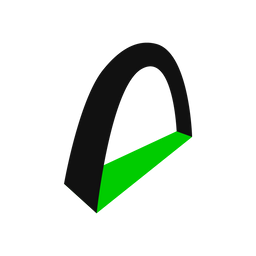Matter Labs just launched its zkSync technology on the Ethereum mainnet, creating a trustless and scalable payment solution on the network.
Ethereum is the crypto project with the largest market cap after Bitcoin. Its growth, alongside the DeFi and NFT boom of the past year, has raised some issues with the infrastructure, mainly related to speed and transaction fees. Many projects offer a solution built on Layer 2.
zkSynk is one of these projects that wants to bring scalability to the network without compromising security.
But first things first, what's a Layer 2 solution.?
Layer 2 (L2) solutions on Ethereum look to improve the scalability of the network. They provide a more significant degree of decentralization, transparency, and (usually) security while reducing the cost of transactions and the energy required to process them.
Protocols such as zkSync offer a solution to this. Basically, they are built on a second layer above the mainnet. They take some of the things of the mainnet and add a couple of new additions combining the best of two worlds.

And what's zkSync
zkSync is a Layer 2 protocol based on zk-Rollup technology that proposes scalable and affordable payments on the Ethereum network.
It's a resource that seeks to guarantee an optimal level of security while optimizing scalability and transparency.
The protocol significantly reduces the cost of operations by combining zkRollup and zkPorter accounts.
Some of the benefits are:
- It's trustless
- Noncustodial
- /100 of Ethereum mainnet fees for ERC20 tokens
- 1/100th of mainnet fees for trades
zkSync is a project managed by Matter Labs. The Germany-based team focuses on scalability as a solution to the problems of the Ethereum network. It also works on the general design of networks so that they respond to the real needs of all users.
The first version of the protocol was released on Ethereum in mid-2020, using PLONK as the transaction validation mechanism. Version 2.0, supported by various updates, promises to improve network performance.
Understanding the zkRollups
Rollups can contain thousands of transactions, making them significantly cheaper than processing each individually. Previous use cases for protocols like Zcash and Loopring required repeated and extensive multi-party trust setups to integrate any new application or update.
zk-Rollups manage many transactions outside of the Ethereum networks, generating a piece of cryptographic evidence called SNARK that enables users to authenticate the existence of specific data without the need to show it. This proof of validity is sent to the main network.
The smart contract associated with the roll-up stores all the information on all the transactions carried out in L2. This information can only be edited with the evidence of authentication. In other words, ZK roll-ups only need this instead of processing extensive data.
Transaction validation through SNARK testing is more efficient than individual transaction validation. Also, off-grid storage is cheaper than storage on the Ethereum Virtual Machine.
The zkSync token mystery
zkSync has announced numerous times that they will launch a token to help support their ecosystem. The details around the token are still a mystery, though.
During a Reddit AMA last year, the founding team mentioned that ⅔ of the token supply would be reserved for the community to help decentralize their ecosystem as much as possible. However, not much information has been published about it, and there isn't a date specified for the launch at the time of writing.
In addition to facilitating faster transactions and lower gas prices (which are always optimistic in the ecosystem), zkSync will also roll out smart contract support and additional security and censorship resistance features.



